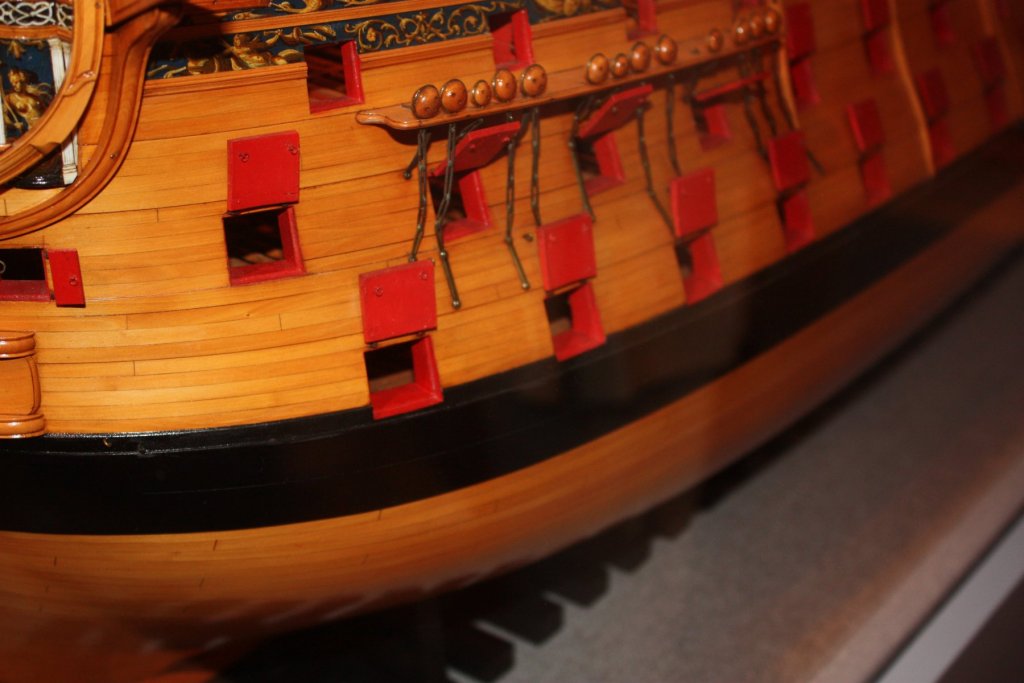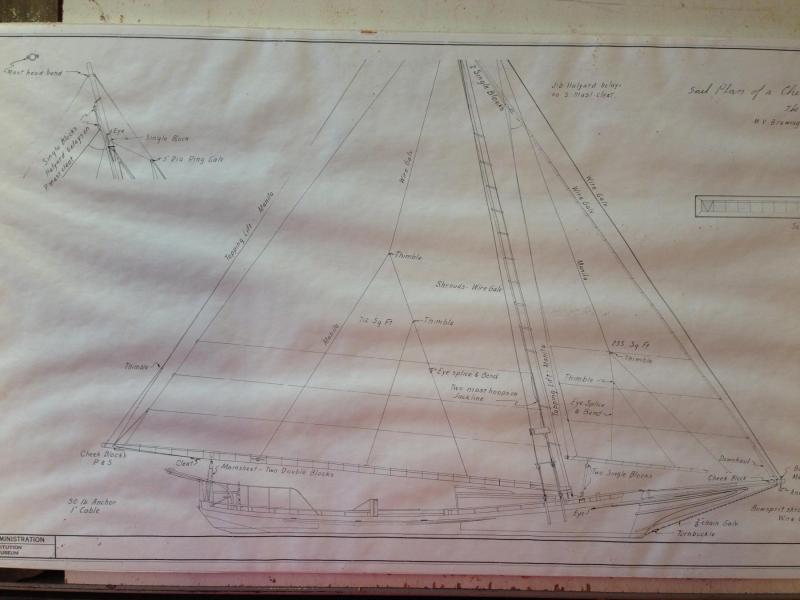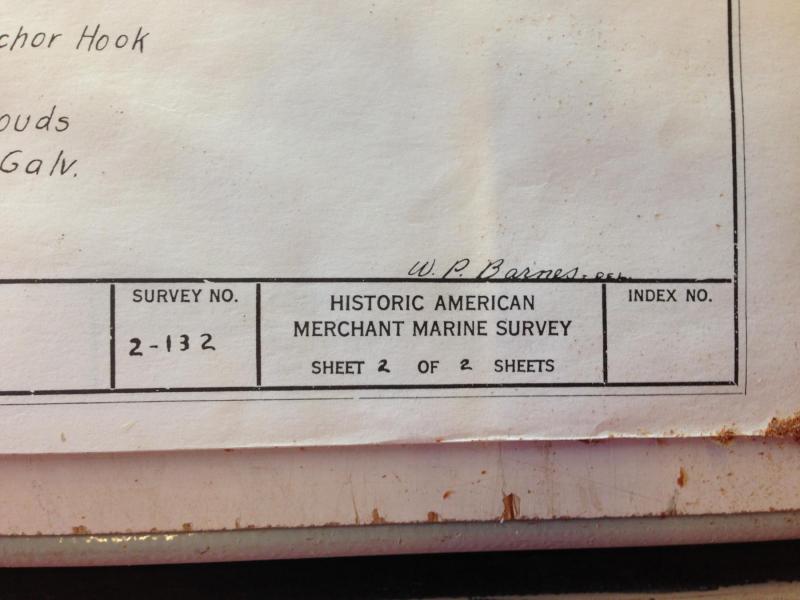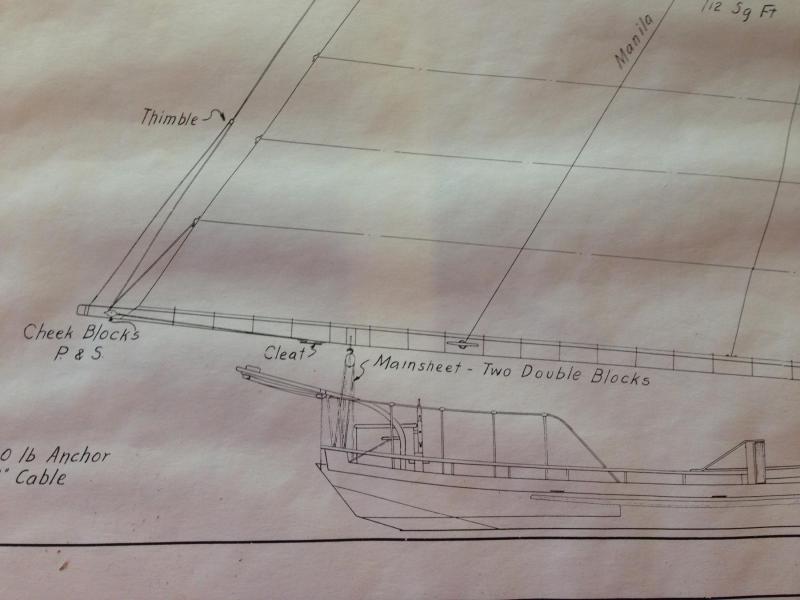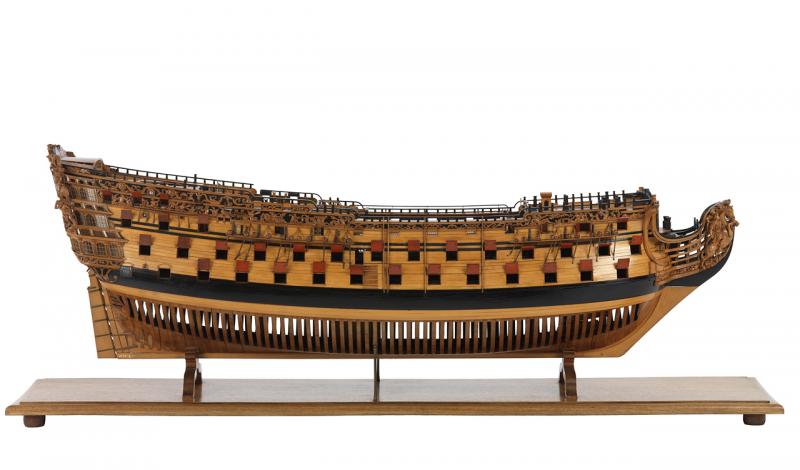-
Posts
8,149 -
Joined
-
Last visited
Content Type
Profiles
Forums
Gallery
Events
Everything posted by allanyed
-
Joss and Druxey The NMM plans for Euryalus show the deadwood piece number five with the same tapered aft end. Not to say that is how it was actually built, just that the drawings show this feature. I did some looking at the "Collections" at NMM and there is a stern model showing that each piece of the deadwood had a lip on the aft end. Allan
-

Are 3 masted ships and 4 that different?
allanyed replied to 1213brett's topic in Masting, rigging and sails
Brett It sounds like you are referring to the sprit top mast which is at the end of the bow sprit and secured with a knee and sometimes shrouds of sort. Some carried a small platform and above that a sprit topsail yard with a square rigged sprit top sail. Allan -
Jag Keep in mind that there will be several types of boats, each a different length, likely a barge, cutters, a launch, etc. Probably the only way to have boats that are the correct design and length is to build your own. As mentioned earlier it is a fun min project and should wind up looking much better than anything you buy. Resin boats on a wooden ship model?? Ugh. There was a good discussion on the Constitution's boats in 2014 and there were different boats at different times. Pick your poison and have at it. There are great descriptions on building your own boats in various books. I can send you one write up, so if you wish, PM me. Allan
- 6 replies
-
- mamoli
- constitution
-
(and 1 more)
Tagged with:
-

Naval Cannons, 1800 era
allanyed replied to Macymae's topic in Building, Framing, Planking and plating a ships hull and deck
Mae If you are building an Admiralty style model, that is with no rigging, and want to display the model as was done like the old models 200 years ago, they usually show no cannon at all. Rigged models do show the guns for the most part. But, it is totally up to you. I have not rigged a war vessel since 1978 but stop when it is similar to the Admiralty style, no masts, no lines. Even so I do rig a few cannon on each deck as I just like to show some and most people expect to see some armament. I close the lids on most of the other ports and am done with it. If you go this route, you can build a deck of sorts at each level to hold a few or all the cannon. Those on the lower decks need not be rigged as this cannot be seen. Up to you. If you are rigging the model, most if not all the guns would be shown if you want to have a look similar to the old models, but again, we have choices and there is no wrong way, traditional or not. Enjoy the hobby, that is the most important thing. Allan -
Thanks to Larry Van Es for his post. I downloaded book one of the Kydd series on my Kindle and so far it is extremely good. Caution though for us modelers. If you have built an English frigate or ship of the line from a kit, the details in the book will be interesting but may be meaningless at times without doing a bit of research. For those that are well read on these ships and/or have scratch built a fully framed plank on frame model, you will be able to picture the details as if you were there. If you rigged a large English warship model you will feel like you are part of the crew, be it in the tops, reeving a line through a block or serving and stropping a new block. Incredible detail to be found in this first book so far. The more you know going in, the more the book will be enjoyed. In reading a bit of Julian Stockwin's CV, he has the creds to make me believe his details are quite accurate regarding some of the things that he describes that were new to me. If there is a down side, his character development leaves a bit to be desired, at least so far. Allan
-
I don't care what type ship or era one is considering building, this log is worth its weight in gold just on techniques that can be learned. Super job Ed, and please accept another thank you for sharing so much. Allan
- 3,618 replies
-
- young america
- clipper
-
(and 1 more)
Tagged with:
-

A method for making panelled sails using paper
allanyed replied to Cathead's topic in Masting, rigging and sails
Eric Thank you for your treatise. What paper did you use? I was skeptical at first as I was thinking the paper would deteriorate in color and strength relatively quickly so did a quick check on commonly available paper. It appears that high quality alkaline paper will last 1000 years and average grades about 500 years. Acid papers will turn in color and become brittle much more quickly. All in all, a very interesting alternative to cloth or silkspan. Allan- 49 replies
-
- sails
- sail panels
-
(and 1 more)
Tagged with:
-
Hi Scott, As the father of a son who is about to retire from the US Army after 21 years in Army Aviation and who did five deployments to Iraq and Afghanistan I really appreciate what you have done and cannot thank you enough for your service. I hope that I can be one of this great group of ours to thank you in some small way by helping you along in your new found venture in ship modeling. Welcome to the fray!! Allan
-

Amati Loom-a-line worth using? (edited by admin)
allanyed replied to bluenose2's topic in Masting, rigging and sails
Les, The shrouds are usually in pairs that go around the mast, not individual lines. If there are an odd number of shrouds the foremost is cut spliced to make a port and starboard shroud. It is served its entire length. This would go on first, then the pairs would follow starting with the port pair. The section of each shroud pair that goes around the mast is served at the upper portion as well. Volume IV of David Antscher's TFFM series explains this in great detail and would really serve you well in the rigging of your Syren. I concur with most of those above, the loom is useless. Allan -
Moxis I have used a similar method with great success and I too add the trunnions separately. I do leave a slight indentation in the master so the casting has the exact same drill spot on each piece, slight off the center line. Drilling without the indentation tends to make the drill want to wander or skip a bit. I also include the cascable and cascable loop where appropriate, but it takes some cleaning up and yes, there is the occasional air pocket to be filled. The main reason I did not include the trunnion is that I used a single piece mold so there is no seam and removing the barrel from a single piece mold is easy if there are no trunnions to grab at the rubber and tear it on the way out of the mold. The seams were always a pain in the neck to clean up so the single piece mold eliminated the problem totally. Allan
-

Pandora by marsalv - FINISHED - 1:52
allanyed replied to marsalv's topic in - Build logs for subjects built 1751 - 1800
These parts and photos are all superb, but the last one is over the top with the detail. Bravo!!! Allan -
Samuel Thanks for sharing the photos of your build. Starting with a cross section is a great learning experience. Per Bill's post, I am also curious as to what ship(s) this is based on? Taking the time to make the top and butt planking as you have done is a home run. You do show things I have never seen before, and have me curious such as the wale being parallel to the gun ports especially as it runs aft, the extremely deep keel, and as mentioned above, the aligned ports. Allan
-
Frank. I'm traveling this week with no access to the photo file as I am working from my IPad. Please email me as a reminder and I will send when I return next wee. Kevin. Did you already email me about these? I will get these to both of you as soon as I can Allan
-
I received a note from Christopher Rowsom, Executive Director of Historical Ships in Baltimore along with Smithsonian drawings of skipjack rigging. If anyone is interested I can forward the drawings (they are photographs in sections of the two pages from the Smithsonian) and/or pass on Chris' contact information. A couple examples of the pieces of the puzzle follow Allan
-
A square is a parallelogram as well as being a rhombus and rectangle or so that old geometry teacher taught us The angle at the corners can be anything, including 90 degrees. As long as the opposing sides are parallel to each other and of equal length and the opposing angles are of equal measure it is a parallelogram. Is this stuff useful? Sure, but did I enjoy the classes? Not as much as history and geography! Allan
-
Welcome Jim, There are several "starter" projects right here in the MSW forums with cross section builds. Only the simplest of tools are needed and would give you a little experience not only in ship modeling, but on the dark side, scratch building as well. Enjoy your time here, it's a ton of fun, being an E ticket ride (I show my age) in all respects. Allan
-
If clamps must be used the clamp designs shown in the Ed Tosti's Naiad books and build logs are the best I have seen to date. Allan
-

Model Shipways Bluenose, Sails or not
allanyed replied to Worldway's topic in Masting, rigging and sails
I agree with Frankie regarding including sails on schooners. I do not like sails on square rigged models, but I have always had sails on schooner models. I was not in favor of it the first time I built one, but I was given no choice so included them and have no regrets and have included sails on schooners ever since. Just one more opinion Allan -
Doug In the first diagram, the lines are made fast to the masts with an eye splice and what appear to be eye bolts so would not be one continuous line. I think they should actually be rigged to a bail or crane or wye, not to an eye bolt. In the second drawing the two blocks you show probably are rigged to a second block which would be secured to the clew of a sail, be it a gaff topsail, or some other. One of the two could be for the halyard. Hard to tell, but this drawing appears to be a simplified rigging plan. If you have a copy of Chappelle's Fishing Schooner book, it shows details of the various styles of rigging in the areas your are asking about. Allan
-
Bruce, First and foremost, welcome. Let it be known that you are one of over 26,000 members that are probably confused at one time or another with our builds, so you are far from being alone in that regard. I am sure you will get a lot of responses regarding kit recommendations. Allan.
-
Keith You continue to impress. After seeing your newest post I had to go back to the beginning and start over. Sort of like re-reading a favorite novel a second or third time or watching a favorite movie like the Godfather for the umpteenth time, just never gets old. Allan
-
Welcome Jim, I suspect all of us are of the phylum porifera when it comes to soaking up information so are not at all alone. Allan
-
Ray Have you gone to St. Michaels or Deal Island to speak with the ship yard folks? WAY back when I was building a skipjack for a friend I traveled there to take photos and they let me take piece of an original pine keel that was being replaced. I used some the wood for some of the model build. If nothing else, it may help to contact the Last Skipjacks Project people to make contact with someone that is truly in the know. You can Google their website for contact information. The Chesapeake Maritime Museum folks may also have someone to help you. Allan
-
Pete The below is a model of the RW built about 1719 so about the same time as the rebuild of the RW itself. Considering the model and ship are of about the same year, the accuracy of the model may be pretty close. The 1719 Establishment scantlings refer to the wales (5' 2" from the upper to the lower edge and 10" thick for a 100 gun ship), as well as Channel Wales (2' 9" from the upper edge to the lower edge and 5 1/2" thick) for a 100 gun ship. The strakes below and above the channel wales were to be 4" thick. There are also scantlings for the sheer which was to be in two strakes 2'3" broad and 4" thick. The strakes above and below this sheer were 3" thick. The double channel wales in the model seem to contradict what is written in the Establishment, so may be a transition style before the 1719 Establishment was implemented in all the building yards. Allan
About us
Modelshipworld - Advancing Ship Modeling through Research
SSL Secured
Your security is important for us so this Website is SSL-Secured
NRG Mailing Address
Nautical Research Guild
237 South Lincoln Street
Westmont IL, 60559-1917
Model Ship World ® and the MSW logo are Registered Trademarks, and belong to the Nautical Research Guild (United States Patent and Trademark Office: No. 6,929,264 & No. 6,929,274, registered Dec. 20, 2022)
Helpful Links
About the NRG
If you enjoy building ship models that are historically accurate as well as beautiful, then The Nautical Research Guild (NRG) is just right for you.
The Guild is a non-profit educational organization whose mission is to “Advance Ship Modeling Through Research”. We provide support to our members in their efforts to raise the quality of their model ships.
The Nautical Research Guild has published our world-renowned quarterly magazine, The Nautical Research Journal, since 1955. The pages of the Journal are full of articles by accomplished ship modelers who show you how they create those exquisite details on their models, and by maritime historians who show you the correct details to build. The Journal is available in both print and digital editions. Go to the NRG web site (www.thenrg.org) to download a complimentary digital copy of the Journal. The NRG also publishes plan sets, books and compilations of back issues of the Journal and the former Ships in Scale and Model Ship Builder magazines.



